Heading out the door? Read this article on the new Outside+ app available now on iOS devices for members! Download the app.
Daypacks are the unsung heroes of the hiking world. Unless you’re lucky enough to camp out every weekend, chances are you’ll be strapping on that 20-liter pack a lot more often than your trusty 65-liter hauler. That means you need a model that’s comfortable enough to wear day in and day out, on all kinds of terrain, and in all kinds of weather. To help you pick the right companion for your next adventure, we evaluated 33 of the hiking community’s favorite rucksacks—both brand-new models and time-tested stalwarts. Here are our nine favorite daypacks for short adventures.
Updated April 2025: We added six new packs to this list, including our new all-around favorite, the Osprey Talon 33/Tempest 33. We also updated pricing and info on the three daypacks that previously made our list and are still some of our top picks.
At a Glance
- Best All-Around: Osprey Talon 33/Tempest 33 ($190)
- Best Organization: Deuter Speed Lite Pro 30/Speed Lite Pro 28 SL ($140)
- Most Weatherproof: Rab Veil XP 30 ($180)
- Best for Big Mileage: Mountain Hardwear Lickety Split 20 ($150)
- Most Versatile: Black Diamond Trail Vista 28 ($180)
- Best for Beginners: The North Face Trail Lite 12 ($100)
- Most Durable: Mountain Equipment Tupilak 20 ($240)
- Best for Bigger Bodies: Gregory Miko/Maya 20 Plus Size ($140)
- Best for Heavy Loads: Mystery Ranch Bridger 35 ($289)
- How to Choose
- How We Test
- Meet Our Testers
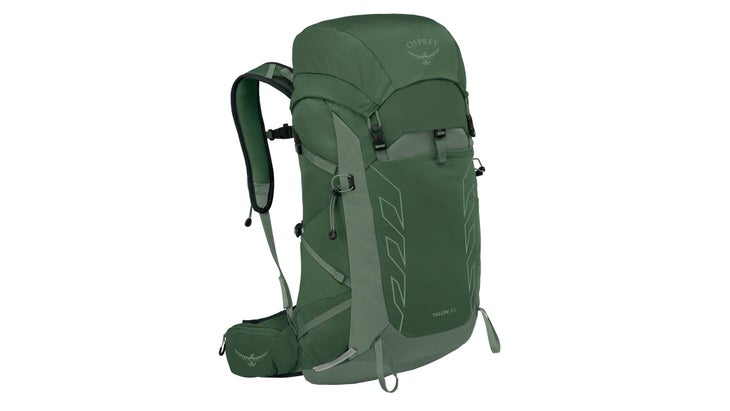
Best All-Around
Osprey Talon/Tempest 33
$190 at REI (Talon) $190 at REI (Tempest)
Weight: 2.8 lbs (men’s); 2.7 lbs (women’s)
Size: Men’s (Talon) and women’s (Tempest); one size each
Pros and Cons
⊕ Comfortable
⊕ Best-in-test adjustability
⊕ Extended fit options
⊕ Tons of organization
⊗ Small pockets
⊗ Not the most waterproof
Talon/Tempest 33 is essentially a full-suspension multidaypack that’s been shrunk by a few dozen liters, making it one of the cushiest daypacks we tested this season. Between the heavily-padded hipbelt and shoulder straps, comprehensive feature set, and high degree of adjustability, it handily won our best-in-test designation.
For starters, the backpanel adjusts a whopping five inches. That made it easy for testers ranging from 5’4” to 5’8” to dial in their perfect size. The framesheet contours to follow the curves of the spine and is integrated directly into the backpanel, locking it into the hipbelt for more effective load transfer.
Tester Tracey Perillo was able to tote 24 pounds of snacks and gear on a 43-mile hut-to-hut trek in the Italian Dolomites without issue: the padded hipbelt defied chafing, and she ended the trip without any hot spots. She noted that, while the twin zippered hipbelt pouches were a little small, alongside a narrow stretch-mesh shove-it-sleeve, roomy toplid, and dual water bottle pockets, they were adequate to keep her organized on the go.
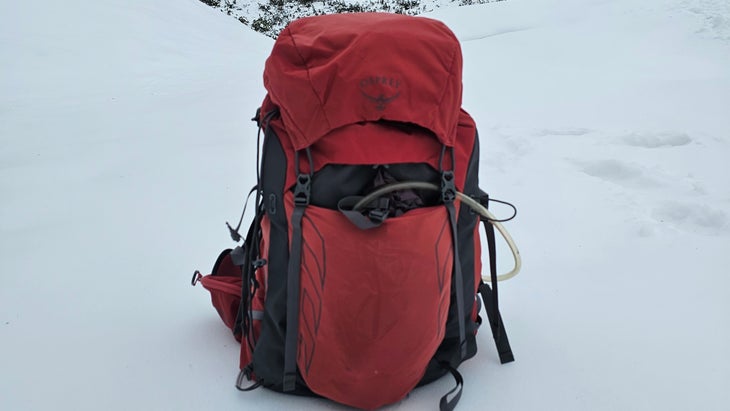
Another tester used the Talon/Tempest for wildlife monitoring in Colorado’s Flatirons. On cold nights, the pack’s capacious top-loading packbag fit all her puffy layers and scientific instruments easily. On warm days, she was able to ratchet the pack down flat with a set of robust compression straps and trail-run without swamping out her back. (Horizontal cutouts behind a translucent mesh panel permit slight but noticeable air flow.)
The pack’s 100-denier nylon body fabric and 420-denier bottom (both 100-percent recycled) remain unscathed after a long season of testing in three states and two countries. Testers raked the pack over rocks, snagged it on cactus, and jammed it into airplane overhead bins. That durability is a very good thing: We’ve adopted this pack as our new go-to, and we’re counting on getting many more miles from it.
For a deep-dive into the Talon/Tempest 33, read our extended review

Best Organization
Deuter Speed Lite Pro 30 / Speed Lite Pro 28 SL
$140 at Jenson (Pro 30) $140 at Jenson (Pro 28 SL)
Weight: 1.6 lbs (women’s); 1.7 lbs (men’s)
Size: Men’s (30) and women’s (28 SL); one size each
Pros and Cons
⊕ Tons of pockets
⊕ Stable, balanced carry
⊕ Good breathability
⊗ Minimal padding
⊗ Thin backpanel necessitates careful packing
This pack was a runaway favorite among the compulsive organizers in our test pool. Between two hipbelt pouches, dual chest pockets, two bottle pockets, a shove-it sleeve, a helmet sling, glasses stowage, pole attachments, an internal pocket, and a floating toplid, there’s a place for absolutely everything.
Backpacker Senior Editor Zoe Gates particularly loved the generous chest pockets. One sports a drop-in sleeve for a 500-milliliter soft flask, the other has a zipper and fits a phone. “I was able to keep my sunscreen, phone, inReach, and snacks handy on a hike up Washington’s Mt. Dickerman this summer,” she said. “It felt very well balanced between a vest-style pack and a traditional daypack.”
Thanks to all that up-front organization, weight felt evenly distributed across the front and back of the body. That let us carry up to 20 pounds in comfort, despite only a thin framesheet and lightweight plastic hoop in lieu of a frame. Any more weight than that, and we felt a little sore, given the light padding on the broad hip fins. The minimalist cushioning did have an upside, though: Sweat evaporated through the meshy hipbelt and shoulder straps, even on 85-degree F days.
“I was definitely dripping, but the wide meshy straps on the Speed Lite are about as breathable as it gets,” Gates said. There’s no trampoline backpanel, so the pack rests directly against your back, but channels in the mesh-covered foam help promote airflow. Gates was sweaty by the time she reached the top of her 4,000-foot climb, but thanks to the ventilation, she didn’t overheat.

Most Weatherproof
Rab Veil XP 30
$180 at Backcountry $180 at Rab
Weight: 1.3 lbs
Size: Unisex; one size
Pros and Cons
⊕ Fully waterproof
⊕ Great organization
⊕ Lightweight
⊕ Durable
⊗ Only comes in one backpanel size
⊗ Not super breathable
⊗ Too many straps
Fast-packing, mountain-running, big ridge scrambles, you name it—if you’re trying to get rowdy in the mountains, the Veil XP should be your first choice of partner. Between the seam-taped, roll-top waterproof construction and vest-style fit, this is the bag we trusted for moving fast above treeline, particularly in temperamental climates like British Columbia’s Selkirk Mountains.
“I was able to carry roughly 30 pounds to the North Face of Mt. MacDonald for an alpine rock climb,” said Climbing Digital Editor Anthony Walsh. “And when I was swept off my feet in a whitewater torrent during a river crossing, I was happy to find that the contents of my bag were completely dry.”
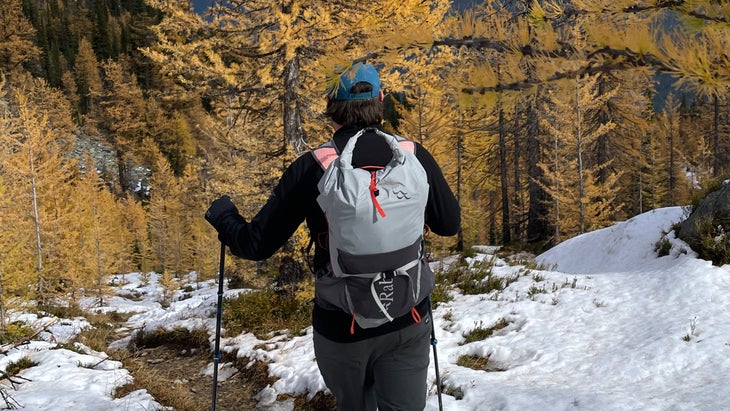
But waterproofing isn’t this pack’s only trick: while the 40-denier Robic ripstop silnylon material feels tissue-paper thin, it withstood a five-hour bushwhack through tall alder and devil’s club on the same trip. Walsh’s T-shirt, pants, and skin emerged from the ordeal in tatters, but the pack remained without a single tear. That’s the magic of silnylon; the addition of silicone makes nylon more than twice as strong, letting Rab get away with a much thinner fabric without sacrificing durability.
When we weren’t crossing rivers or wading through undergrowth, the pack was also well-equipped for moving fast along flat trails. The low-profile silhouette never jostled—even when we were jogging—and the chest harness’s easy-access pockets meant we had everything within easy reach to stay fueled and hydrated on the go. Two shoulder-strap pouches each fit a smartphone or 500-milliliter soft flask, and the tapered, hip-hugging waist belt sports another zippered pocket that held sunglasses and a warm hat. “This is a very efficient design for those who want to travel quickly and rarely take off their packs,” said Walsh. The biggest con: Without any backpanel channels to boost airflow, our backs got pretty dang sweaty on warmer days.
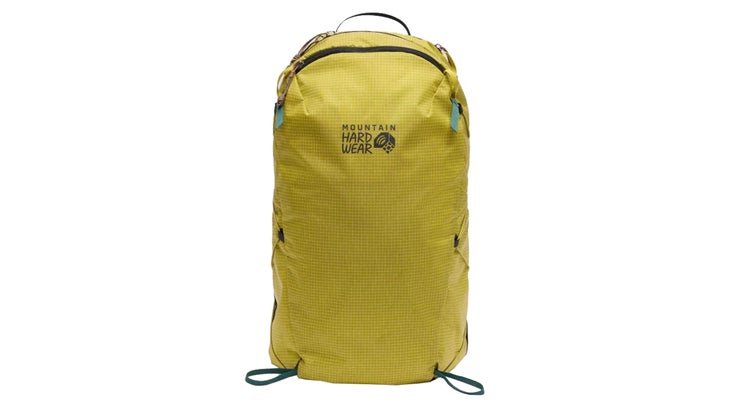
Best for Big Mileage
Mountain Hardwear Lickety Split 20
$150 at Backcountry $150 at Mountain Hardwear
Weight: 1.3 lbs
Size: Unisex; one size
Pros and Cons
⊕ Good organization
⊕ Durable
⊕ Low-profile silhouette
⊗ Bottle pockets are hard to reach on the go
⊗ Skimpy suspension for the size
The name pretty much says it all: this is a fun, jaunty little pack made for folks who like to go far, fast. Like a few other packs on this list, it’s a nice hybrid between a running vest and a daypack, which means it keeps all your essentials upfront within easy reach, while still giving you 20 liters of capacity for layers and emergency gear.
The Lickety Split also boasts better durability than most running vests: The shell fabric is a 210-denier high-tenacity ripstop nylon, which was enough to escape rip-free after light bushwhacking and a bit of rocky scrambling in Colorado’s Indian Peaks. And whenever our slope angle or speed kicked up a notch, we were able to cinch down the dual sternum straps and the internally-threaded compression straps without taking the pack off. That let testers switch gears without losing momentum—ideal when we had to bust out a nearly 3,000-foot climb from Herman Gulch to the shoulder of Colorado’s Pettingell Peak.
The pack’s turtle-shell-like shape fit closely to the back and didn’t sway, even while lugging around 10 pounds of gear. Testers experienced sore shoulders when they exceeded that weight, as the pack’s simple webbing belt is more for stability than load-bearing. However, we rarely needed more than eight pounds for a day trip, anyway, and the pack’s slim, turtle shell-like silhouette limits its internal capacity, making it feel small and svelte for a 20-liter pack. The back of the pack sports three spacious zippered pockets for valuables like a phone, keys, or wallet—any of the small stuff you don’t want stored in the four roomy, accessible chest pockets. Within the main pack body, you’ll find a hydration sleeve that’s big enough to fit a two-liter reservoir.
We loved the sheer quantity of organization options, but did have a few gripes about the details: While most testers kept hydrated via 500-milliliter soft flasks stowed on the chest harness, bottle people found they couldn’t reach the side pockets without taking the pack off. And even the flask people were peeved to find that the elastic bands designed to keep flasks in place weren’t big enough to fit around all models. Our happiest testers? The reservoir people.
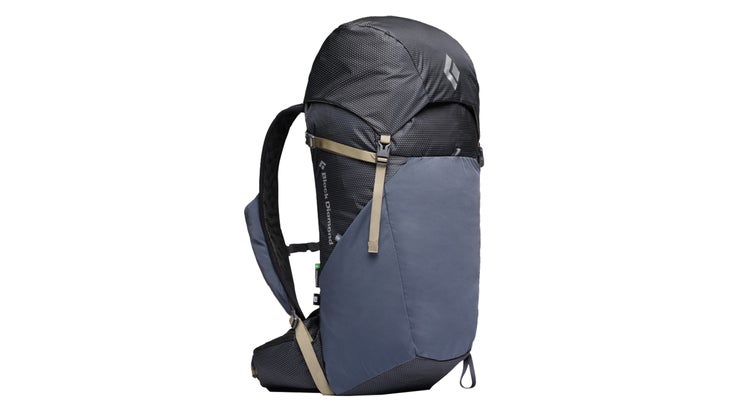
Most Versatile
Black Diamond Trail Vista 28
$180 at REI $180 at Backcountry
Weight: 2.1 lbs
Size: Unisex; S/M and M/L
Pros and Cons
⊕ Full frame
⊕ Adjustable backpanel
⊕ Integrated rain cover
⊗ Narrow shoulder straps uncomfortable for some
⊗ Sub-par breathability
Big enough for ultralight overnights, comfy enough for long days, and svelte enough for technical peak bagging, the Trail Vista 28 is an ideal do-it-all bag for multi-passion hikers.
Carry was top-notch. Testers loved the continuous, wrap-around hipbelt, which stayed suctioned to our hips and never rubbed or chafed, even on the 10-mile slog to Spectacle Lakes in Rocky Mountain National Park. Our favorite feature, though, was the lightweight, steel wire frame, which gave the pack just enough structure to support 15 pounds of cargo. “I always felt completely comfortable, even when carrying heavier loads,” said Alaska-based tester Puck Van Dommelen after a 15-miler near Anchorage.
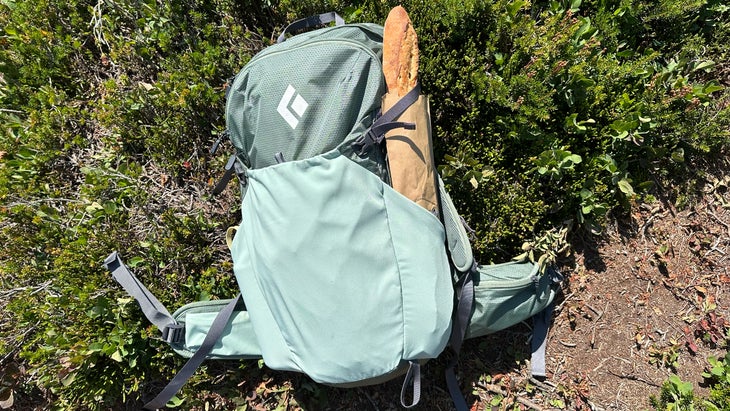
A sliding adjustment system, which extends the backpanel length by up to five and a half inches, was easy to use when swapping between testers, and a panel of perforated EVA foam felt plush against the spine. The perforations permitted some airflow, but the close-to-body fit negated most of the ventilation. “The pack carried flush to my body and didn’t breathe much while moving,” complained one Colorado-based tester. She was, however, a big fan of the organization: A zippered toplid fit a hat, gloves, and first aid, and the shove-it sleeve was generous enough for three warm layers, she said. We were able to stash Nalgenes in the two stretch side pockets without taking the pack off, and loved the hip-belt pouches and single shoulder pocket for small essentials like snacks, lip balm, and gels.
The mesh pack’s 100-denier Robic nylon looked flimsy at first glance, but we’ve yet to put any holes in it, even after a full season of rough use across Alaska, the Colorado Rockies, and the Pacific Northwest. (One tester noted, however, that the light green colorway did seem to have a special magnetism for dirt and stains, and the mesh bottle pockets were prone to small snags.)
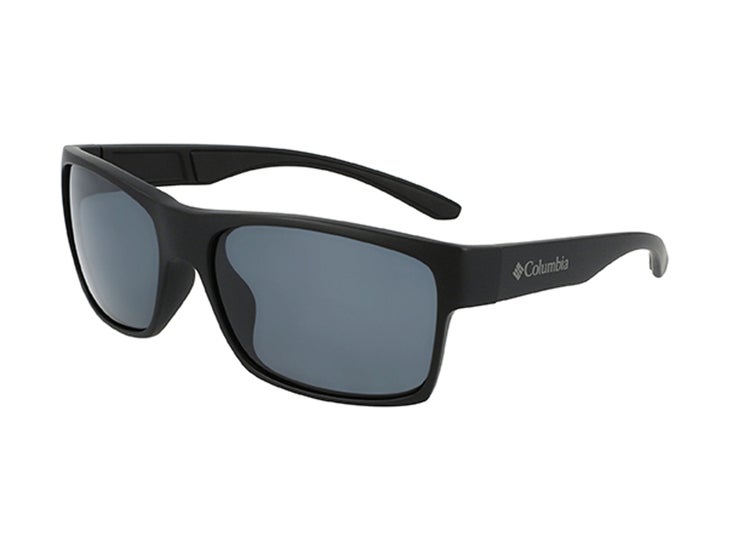
Paid Advertisement by Columbia Sportswear
Columbia Brisk Trail Polarized Sunglasses
Whether you’re scaling rugged peaks or trekking through dense forests, Columbia’s Brisk Trail sunglasses are your companion for every adventure under the sun. Featuring a durable, lightweight injected frame and infused with rubber nosepads, these sunglasses deliver all-day comfort. Polarized lenses help reduce glare and eyestrain, while 100% UV protection keeps eyes happy.

Best Lightweight
The North Face Trail Lite 12
$100 at Backcountry $100 at The North Face
Weight: 1.1 lbs (men’s)
Size: Men’s and women’s; one size each
Pros and Cons
⊕ Light weight
⊕ Affordable price
⊕ Accessible pockets
⊗ Only comes in one backpanel size
⊗ Minimalist hipbelt
There’s no reason to buy a G-Wagon when a Corolla could do the job just fine. That’s the ethos behind this compact, dependable little pack.
At just 12 liters, the North Face Trail Lite has the capacity for an extra jacket, lunch, first aid, and up to five liters of water—enough to keep you going for a half-day’s hike but not enough to lure you into overpacking. The stripped-down floor plan has pockets in all the right places—two on the shoulder straps for easy-access items like sunscreen and lip balm, two stretch-mesh side pockets that each fit a standard water bottle, and a zippered top pocket for valuables like keys or sunglasses. The pack’s simple webbing hipbelt is more for stabilization than load transfer, but we were able to stuff the Trail Lite with around 15 pounds on long hikes in the southern Utah desert and never suffered sore shoulders. Credit the broad shoulder straps, which spread weight evenly over the chest and upper body, and dual sternum straps, which helped mountain guide Samantha Cooke dial in the perfect fit while hiking and even trail running in Zion National Park. (She noted, though, that the close fit limited breathability and left her swamped out on hot days.)
At just over a pound, the Trail Lite lives up to its name: it was one of the lightest packs we tested this season. And yet, it doesn’t sacrifice durability. The 210-denier ripstop nylon body fabric withstood brushes with sandstone boulders in Zion, and an even tougher 600-denier polyester canvas on the bottom meant we never worried about dropping the pack on sharp talus in Colorado’s San Juan Mountains. Between its just-right size, practical featureset, and ultra-affordable price, the Trail Lite is our top pick for beginners, as well as longtime hikers looking for a stripped-down, affordable daypack.

Most Durable
Mountain Equipment Tupilak 20
$240 at Mountain Equipment (Currently Unavailable)
Weight: 1.1 lbs
Size: Unisex; S/M and L/XL
Pros and Cons
⊕ Plentiful pockets
⊕ Good water resistance
⊕ Excellent durability
⊗ No hydration pouch
⊗ Pricey
This is the little pack that could. Most frameless, vest-style packs can’t take much weight, but we were able to load the Tupilak with up to 20 pounds of gear for long backcountry days, and it never felt bulky or awkward. “On a 15-miler through Chugach National Forest, I barely felt the pack, even though it was loaded with 2.5 liters of water, clothes for a blustery day, and a bunch of food,” reports Alaska-based geologist Dorn Van Dommelen. “It moves well with my body and is a joy to wear.” Credit goes to a recycled polyester mesh backpanel, broad shoulder straps, and dual sternum straps, which distribute weight evenly across the chest and shoulders to prevent jostling.
Testers loved the organization. The main pack bag is accessible via both a cinch-closure top and a long side zipper. Pockets are numerous: three mesh and one zippered pocket decorate the chest harness, and a front stash pocket holds a wind layer.
This little beast is also astonishingly tough. The main fabric is a TPU-coated, 300-denier nylon double-ripstop that defied everything from persistent drizzle to sharp rocks and stubborn willows. “I’ve used it on a number of bushwhacks and rainy hikes in Denali,” Van Dommelen says. “It still looks good and shows no significant wear.”
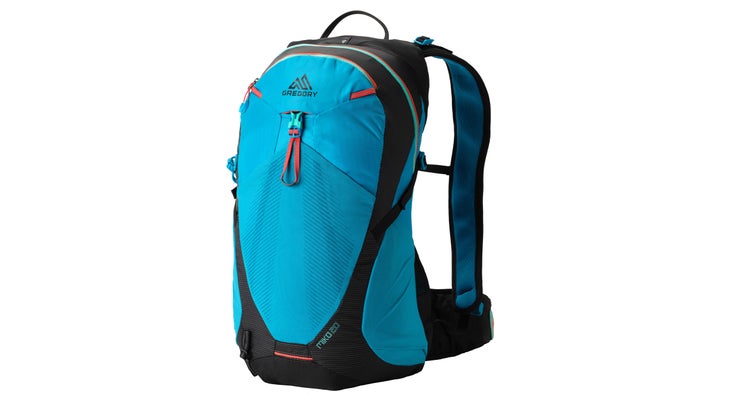
Best For Bigger Bodies
Gregory Miko/Maya 20 Plus Size
$140 at REI (Miko) $140 at REI (Maya)
Weight: 2.2 lbs (men’s)
Size: Men’s (Miko) and women’s (Maya); one size each
Pros and Cons:
⊕ Inclusive fit
⊕ Decent breathability
⊕ Good load-carrying capacity
⊗ Narrow shape hard to pack
Plenty of packs come with extended hipbelts, but few are built from the ground-up with bigger bodies in mind. Enter the Miko/Maya 20. Designed specifically for plus-size hikers, the Miko/Maya features wider angles on the shoulder harness, adjusted buckle locations for easier access, and pulled-forward hipbelt fins. The result is a secure wrap, even on wider hips, and pockets that remain easily accessible no matter your body shape. The improved fit maximizes not just comfort but load transfer: West Virginia hiker Ashley Manning was able to take a 20-pound load for an out-and-back on the Old Kaymoor Miners Trail in New River Gorge National Park and experienced zero chafing, rubbing, or sway. Credit goes to the multi-density foam backpanel, which provides enough rigidity to stabilize heavier loads without barreling or buckling.
Mesh-wrapped channels in the foam kept the Miko/Maya breathable, even in 80-degree West Virginia humidity. We had no complaints about durability: a 210-denier high-density nylon lines the pack bottom, and a water-repellant 100-denier version comprises the main pack bag. (Bonus: It’s 45-percent recycled material) Over the course of a single summer, Manning hiked just about every trail in the New River Gorge—including some with mandatory bushwhacks and butt-slides. And yet, no holes. “It still looks almost brand-new,” she reports.
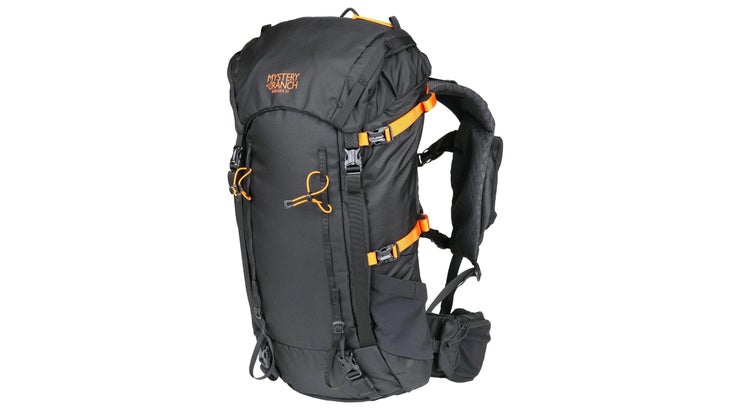
Best for Heavy Loads
Mystery Ranch Bridger 35
$289 at Backcountry From $217 at Amazon
Weight: 3.7 lbs. (M)
Size: Unisex (S-XL)
Pros and Cons:
⊕ Great load-carrying capacity
⊕ Comfortable
⊕ Durable
⊗ Heavy
⊗ Pricey
The Bridger 35 knows no compromises. With the organization of a running vest, the load-carrying capacity of an overnight pack, and the close-to-back fit of a truly athletic daypack, it emerged as our top choice for gear-intensive, all-day adventures this season. Thanks to a 4-millimeter, spring-steel perimeter frame (a direct descendant from Mystery Ranch’s backpacking frames) and a cushy, EVA-foam-padded hipbelt, we were able to load the Bridger 35 with up to 40 pounds. In fact, Utah tester Mark Maleski carried that weight for a 16-miler and reported zero rubbing or next-day soreness.
Organizational features hit all the marks: chest pockets, top lid pocket, hipbelt pockets, and dual stretch-mesh side pockets. Our only real feature complaint was that the compression straps had to be unbuckled to access the side zipper. As for durability? The Bridger’s main pack body uses a 100-denier recycled ripstop Robic nylon, while the boot boasts a 330-denier ripstop Robic. Both fabrics emerged with zero tears after a season of bushwhacking and Colorado ridge scrambling. The Bridger’s biggest drawbacks? Weight—and price. It was both the heaviest and the most expensive daypack in our testing pool.

How to Buy a Daypack
Pay no mind to the bells and whistles: here are the features that actually matter.
Fit
Just because you’re carrying less weight doesn’t mean fit is any less important. Unless you know your torso is of average length (usually 18 to 19 inches—a men’s medium or a women’s medium/large), beware of daypacks that come in only one gender and size. We recommend going into your local gear shop to get fitted professionally or, at the very least, trying on several fully-loaded packs in the store before you buy. Make sure the hip belt wraps your hips securely enough to take the weight off your shoulders, and that you don’t hit your head on the top lid when you look at the ceiling.
Suspension
Most hikers find they’re more comfortable with a well-padded hipbelt and at least some kind of rigidity in the back panel—whether that’s an actual metal frame or just a rigid foam sheet. These features help transfer the force of your load to your hips, which can prevent back and shoulder pain on long hikes.
Capacity
Practice loading your typical kit into the pack before you buy to make sure it fits. Note that 15 to 20 liters is often standard for summer hiking, but four-season adventurers may need at least 30 liters to accommodate bulky winter layers.
Features
Feature preferences are highly personal. Consider whether you’d rather take lots of sit-down breaks, or snack and drink on the go. If the latter, look for hip or chest pockets. Make sure you can reach your water without having to take the pack off. If you’re the kind of person who’s constantly swapping layers, prioritize stretch-mesh pockets or a dorsal bungee net for quick stowage.
How We Tested
- Coldest temp: -5 degrees F (Dolomites, Italy)
- Hottest temp: 95 degrees F (Bozeman, Montana)
- Highest elevation: 14,344, (La Plata Peak, Colorado)
- Highest winds: 55 mph (Aster Lake, Alberta)
- Heaviest load: 40 lbs (Jay Peak, Vermont)
This year, we started by evaluating all the brand-new and soon-to-be-launched daypacks on the market. We quickly narrowed this list to 19 contenders that had the technical materials, specs, and organizational features that adventurers need to tackle big miles in rough terrain. We compared these new darlings to top-performing models of years past to see how they held up to the more longstanding residents of our gear closets. Those good enough to replace our tried-and-true favorites made it onto the next round.
Once we had our shortlist, we shipped samples out to 18 testers across nine states and three countries. For the next five months, testers put the bags through their paces. We nixed the models that broke, buckled, or left us bruised. The products you see here are those that remained: the lightest, most innovative, and most resilient packs of 2025.
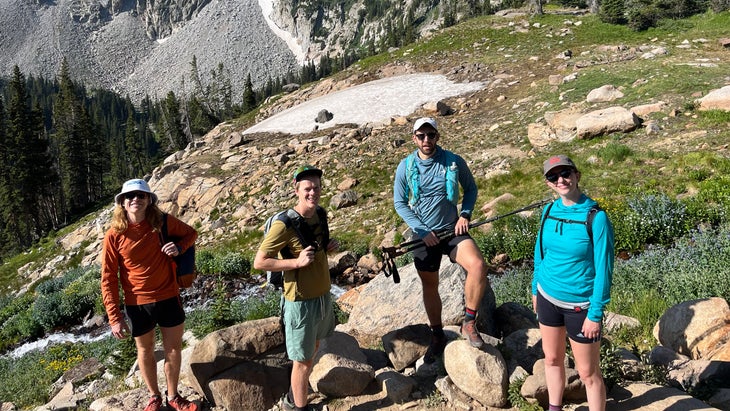
Meet Our Testers
Corey Buhay is a former Backpacker editor and co-author of the hiking guidebook “Colorado Rockies” and is currently based in Boulder, Colorado. She’s been managing the packs category for Backpacker since 2019, and has developed very strong opinions about hipbelt pockets.
Zoe Gates is Backpacker’s senior editor and a lifelong hiker. She’s currently based in Bellingham, Washington, where she spends weekends exploring the Pacific Northwest with her partner Connor and adventure pup, Juno. She never hits the trail without a bag of morale-boosting sour gummy worms.
Bradley Allf is a science writer, naturalist, and a postdoctoral research fellow at North Carolina State University. Gear-testing claim to fame: he once put a waterproof daypack to the test by strapping it on and swimming up a creek. When he’s not studying insects and food webs, you can find Allf scouring the woods for snakes, exploring underground drainage tunnels, or busting out long backpacking loops in the mountains.
Related
The Best Ultralight Tents
The Best Water Filters
The Best Women’s Rain Jackets
